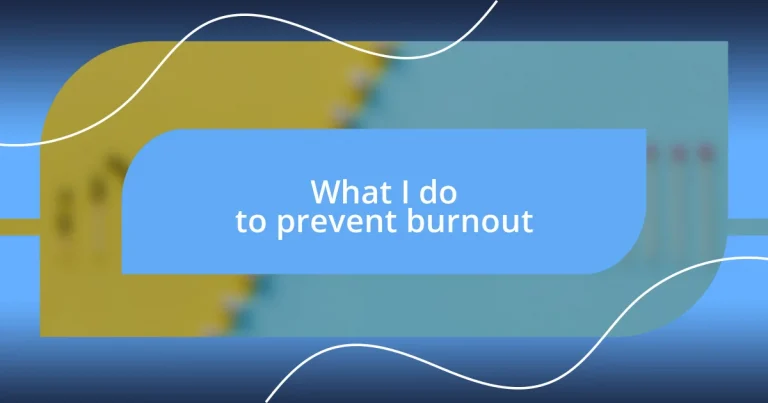Key takeaways:
- Burnout often arises from excessive workload, lack of control over work-life balance, and a negative work environment, leading to emotional exhaustion.
- Recognizing early signs of burnout, such as chronic fatigue and lack of enthusiasm, is crucial for proactive management and preservation of well-being.
- Implementing daily habits like mindfulness, physical activity, and setting clear boundaries between work and personal life can significantly improve stress management and enhance overall mental health.
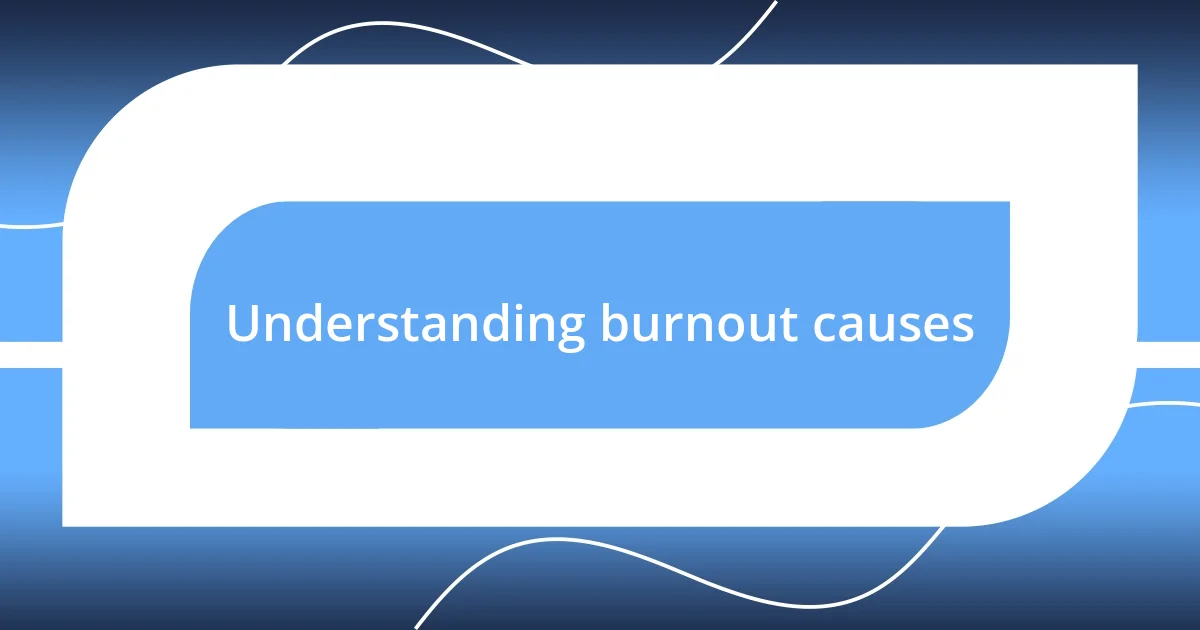
Understanding burnout causes
Burnout can often stem from a combination of excessive workload and emotional exhaustion. I remember the time I was juggling multiple projects at once, trying to meet tight deadlines. It felt like I was constantly running on a treadmill with no off switch; was I working too hard, or just not smart enough? This emotional fatigue can trick you into believing that you’re not good enough, intensifying the sense of burnout.
Another significant cause of burnout is a lack of control over work-life balance. I’ve often found myself glued to my laptop late into the night, convinced that I had to be the first one to log in the next morning. This kind of relentless pressure left me feeling trapped, as if I had no say in how my day unfolded. Have you ever felt like you were living to work instead of working to live?
Finally, the environment in which we work plays a crucial role in our overall mental health. I’ve experienced times when the negativity among coworkers made every task feel like a burden. It leads me to wonder, how can we thrive in a place where support is scarce? Creating a positive and collaborative atmosphere can make all the difference, alleviating some of that weight we often carry on our shoulders.
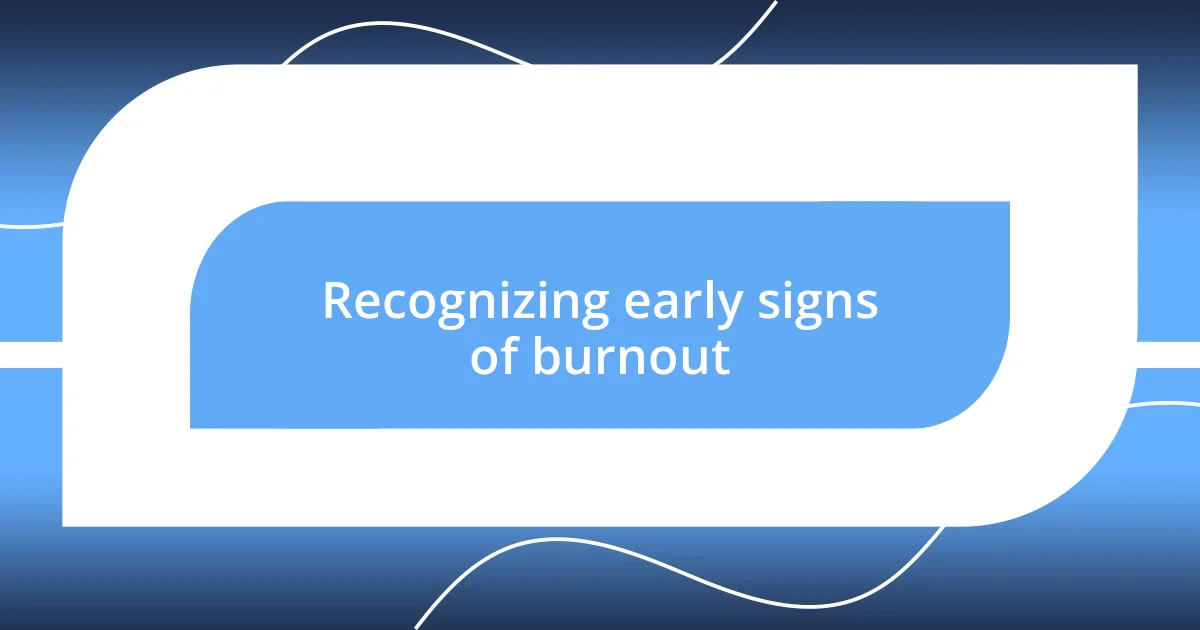
Recognizing early signs of burnout
Recognizing the early signs of burnout is crucial to addressing it before it spirals out of control. I remember a time when I began to dread even the thought of work; tasks that used to excite me suddenly felt like a chore. That sense of dread is often one of the first indicators that something is off. It’s essential to pay attention to those feelings before they deepen into full-blown burnout.
Here are some early signs to watch for:
- Chronic fatigue: Feeling drained and lacking energy, even after a good night’s sleep.
- Lack of enthusiasm: A noticeable decline in your interest and motivation for tasks that once inspired you.
- Irritability: Heightened sensitivity to stressors and a tendency to snap at colleagues or loved ones.
- Cognitive issues: Experiencing difficulty concentrating or frequent forgetfulness.
- Physical symptoms: Unexplained headaches or stomachaches that seem to have no other medical explanation.
Noticing these signs early can help in taking proactive steps to restore balance before burnout takes hold. I’ve learned that a little self-awareness goes a long way in preserving my well-being.
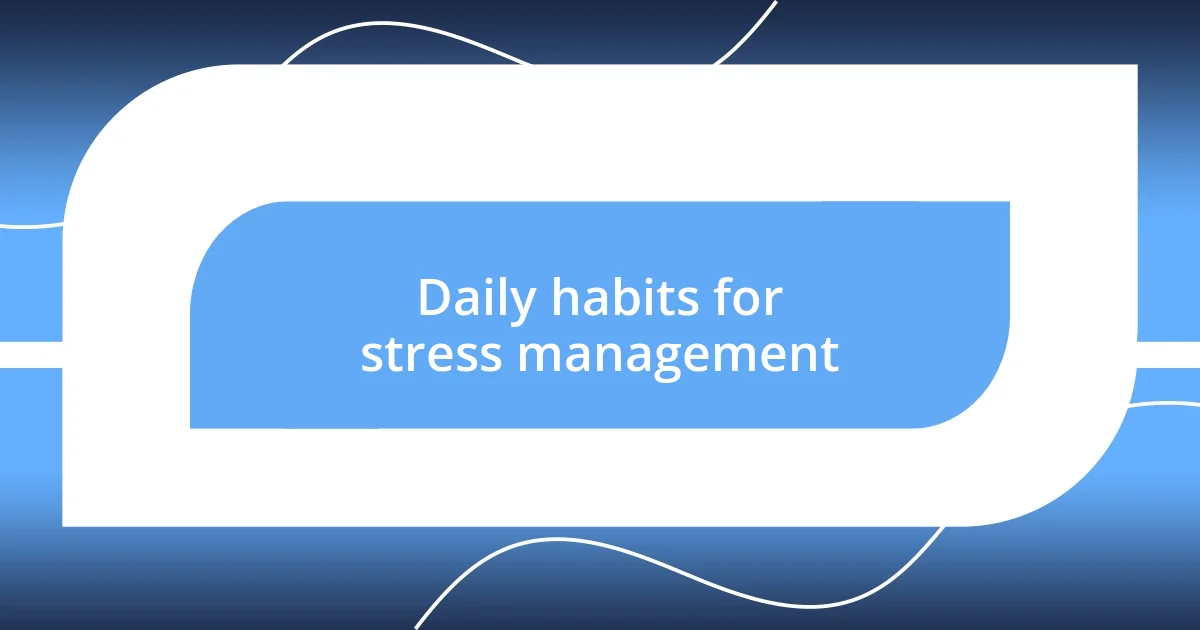
Daily habits for stress management
One daily habit that I find invaluable for stress management is setting aside a few moments each day for mindfulness or meditation. Just last week, I took a short break during my workday and focused on my breathing. In those few minutes, the noise of deadlines and endless to-do lists melted away, allowing me to reconnect with myself. It’s fascinating how that brief pause can shift my perspective and recharge my mental batteries.
Another practice that I consistently incorporate is physical activity. Whether it’s a brisk walk around the block or a short yoga session in my living room, moving my body brings an immediate sense of relief. I’ll never forget a time I was feeling overwhelmed; I stepped outside for a 10-minute walk, and it was like hitting a reset button. When I returned, I felt clearer, more focused, and ready to tackle my tasks.
Lastly, I prioritize maintaining a structured routine, which includes setting distinct work hours. I’ve noticed that when I respect these boundaries, my productivity soars, and my stress levels decrease. Trying to blur the lines between work and home life has only led to frustration for me. Sticking to this habit compels me to be mindful of my energy and keeps burnout at bay.
| Habit | Benefit |
|---|---|
| Mindfulness/Meditation | Reduces stress and enhances clarity |
| Physical Activity | Boosts mood and energy levels |
| Structured Routine | Improves productivity and work-life balance |
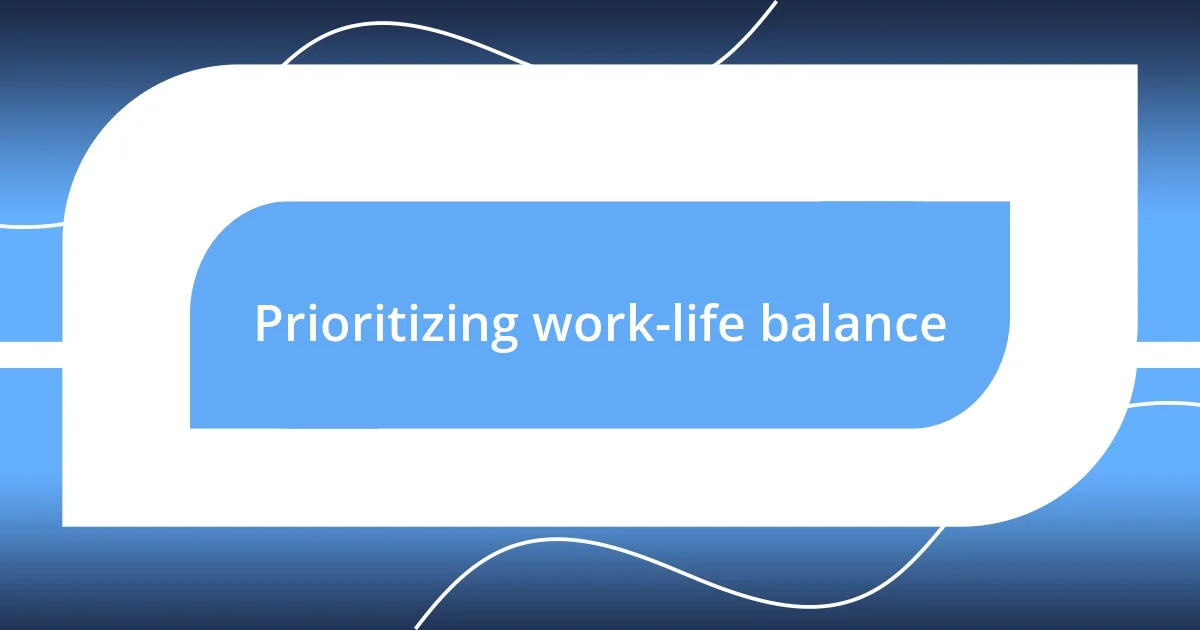
Prioritizing work-life balance
Work-life balance has become a cornerstone of my daily routine. I remember the days when I used to work late into the night, convinced that the extra hours would boost my productivity. However, I soon realized that those late nights brought overwhelming fatigue and irritation, leaving me less effective. By consciously prioritizing my personal time, I discovered how important it is to recharge—whether that means enjoying a family dinner or savoring a good book on the couch.
Taking regular breaks during my workday has been a game-changer. I’ve learned to treat these breaks as sacred moments rather than indulgent distractions. For instance, I often step outside for a quick stroll, and during those moments, I’m reminded of life beyond my computer screen. It’s amazing how fresh air and a change of scenery can work wonders for my focus. Have you ever tried stepping away from your tasks for just a few minutes? You might find your creativity and clarity skyrocketing.
Setting clear boundaries between work and home life has been crucial for my peace of mind. I’ve made it a habit to turn off work-related notifications after hours, which has significantly reduced my anxiety. I vividly recall one evening when I resisted the temptation to check emails and spent quality time with my family instead. That night, I felt a warmth and connection that left me feeling fulfilled. It’s surprising how much a little discipline can enhance our overall well-being, don’t you think?
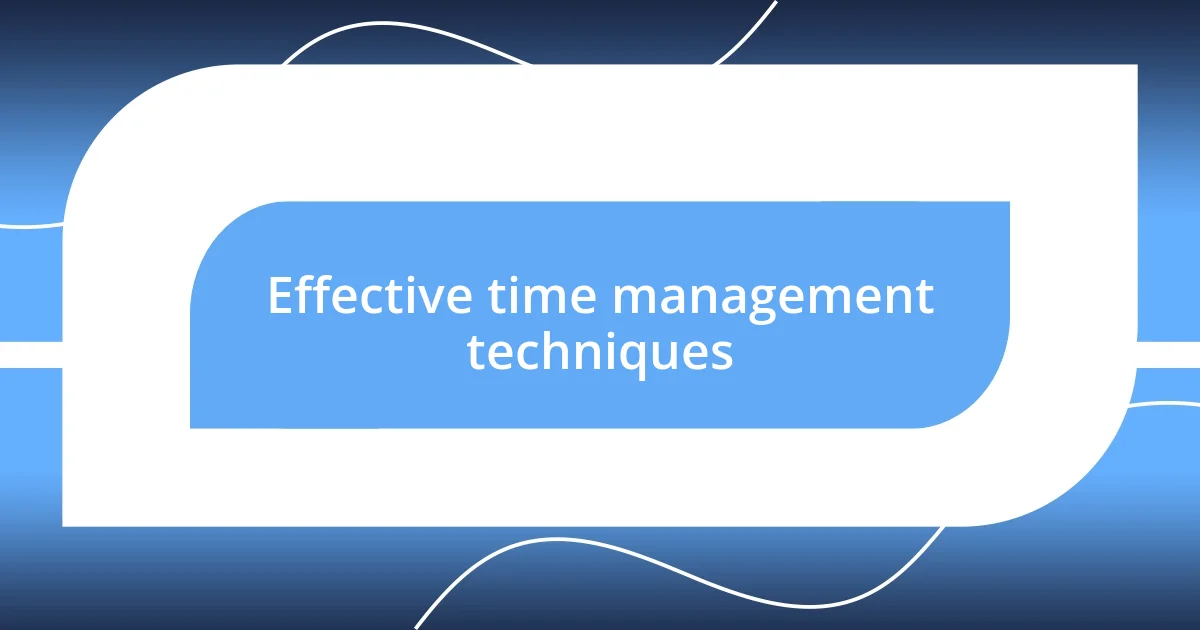
Effective time management techniques
Effective time management goes beyond just having a plan; it’s about being intentional with how I allocate my time. I remember a particularly hectic month when I started using the Pomodoro Technique—working in concentrated bursts followed by short breaks. This method not only kept my focus sharp but also reminded me to breathe and stretch regularly. Have you ever given yourself permission to step away from your screen? It’s revitalizing, isn’t it?
I also find immense value in prioritizing tasks with the Eisenhower Matrix, where I categorize my to-do list into four quadrants: urgent, important, non-urgent, and non-important. By focusing on what truly matters, I’ve started to feel less overwhelmed. There was a day recently when I realized that a looming project wasn’t urgent but simply causing undue stress. Shifting my focus freed up time and made me feel more in control. Have you experienced the weight lifted off your shoulders when you prioritize effectively?
Lastly, I’ve adopted the practice of time blocking, dedicating specific blocks in my calendar for specific tasks. This method transformed my approach to planning. Just last week, I had a block set aside for creative writing, and I genuinely looked forward to it. There’s something grounding about knowing what to expect from my day. I’m curious—what scheduling tool or technique do you think would best suit your style? It might just be the key to unlocking your productivity!
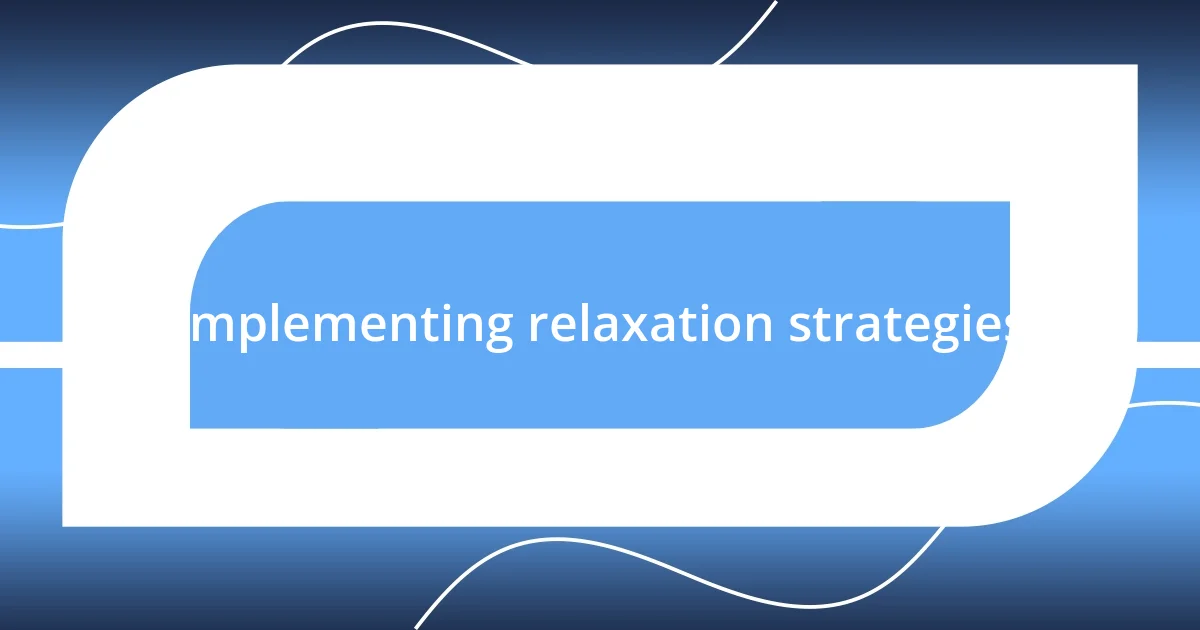
Implementing relaxation strategies
Implementing relaxation strategies has become a non-negotiable part of my routine. I remember the first time I tried deep breathing exercises during a particularly stressful afternoon; it felt like a light switch had flipped. Within seconds, I could feel the tension begin to melt away. Have you ever experienced the power of just a few deep breaths? It’s incredible how something so simple can have such a profound effect on our state of mind.
Mindfulness meditation is another technique I’ve embraced, often finding small pockets of time each day to sit quietly and focus on my breath. Just last month, I committed to a five-minute daily meditation practice, and I was surprised at how quickly it transformed my stress levels. Instead of rushing through tasks, I’ve learned to approach them with a calm and clear mindset. Have you considered how a moment of mindfulness could shift your perspective during a hectic day?
On weekends, I make it a point to engage in creative hobbies like painting and gardening. One Saturday, I lost myself in painting for hours, captivated by the colors and shapes. It filled me with a sense of joy that simply isn’t available in the hustle of work. I encourage you to explore what activities spark that same zest in you. What can you do that makes you feel alive and truly present?
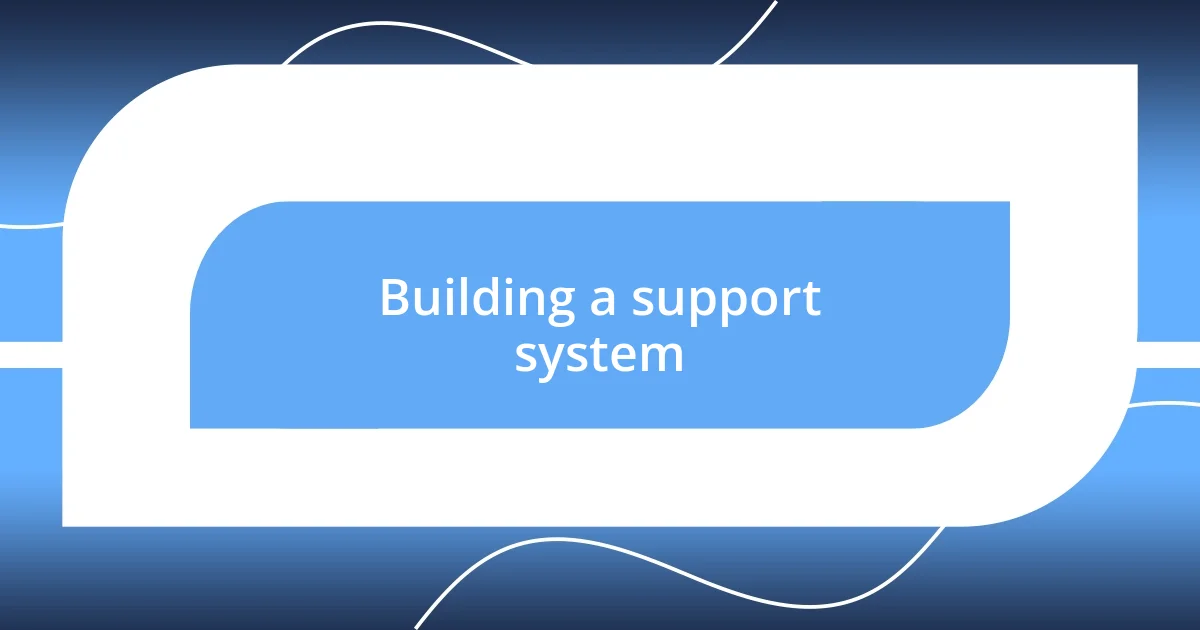
Building a support system
Building a support system has been instrumental in maintaining my mental health. When I first moved to a new city, I felt lonely and overwhelmed. It wasn’t until I reached out to local groups through social media that I connected with like-minded people. Have you ever thought about how your connections could enhance your life? I’ve learned that even a simple coffee chat can lift my spirits significantly.
Moreover, I make it a point to nurture friendships that bring positivity into my life. I remember a particularly tough week when I decided to call a close friend just to vent. The conversation quickly turned into laughter, and it reminded me that I’m not alone in this journey. Have you checked in with a friend lately? Support can come from surprising places, and sometimes a friendly ear can make all the difference.
I can’t emphasize enough the importance of seeking professional guidance when needed. When burnout hit me hard, I hesitated to talk to a therapist. But my first session opened my eyes to new coping strategies. I found that having someone who understands my struggles provided clarity and relief. Have you ever considered how talking to a professional could help untangle the emotional knots we sometimes carry? The right support can truly lighten your load.












